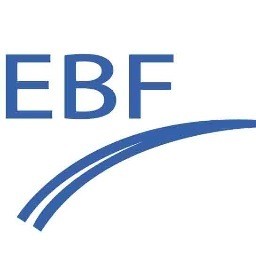ICH M10 bioanalytical method validation: the importance of good guidance

WHITE PAPER & FEEDBACK DOCUMENTS | PANEL DISCUSSION | EDITORIALS, COMMENTARIES & INTERVIEWS
Measuring the concentrations of therapeutic products and their metabolites in biological matrices forms a critical component of the regulatory decisions made regarding the efficacy and safety of drug products. Therefore, it is imperative that the bioanalytical techniques, workflows and methods used to this effect are robust, well characterized and universally implemented.
The techniques used should be well validated and comprehensively documented to best support regulatory decisions. The 2019 ICH M10 bioanalytical method validation guideline serves to recommend steps to take to ensure bioanalytical assays are validated for the specific application in question in the analysis of study samples.
In this feature we assess the global bioanalytical landscape in light of the draft ICH M10 bioanalytical method validation guideline published in 2019. Explore the impact of the draft guidance document through a selection of exclusive Bioanalysis journal and Bioanalysis Zone content.
White Paper
2019 White Paper on Recent Issues in Bioanalysis (Part 2)
Bioanalysis (Vol. 11, December 2019)
Feedback Documents
 European Bioanalysis Forum feedback on draft ICH M10 guideline on bioanalytical method validation during the Step 2b public consultation period
European Bioanalysis Forum feedback on draft ICH M10 guideline on bioanalytical method validation during the Step 2b public consultation period
Bioanalysis (Ahead of print, April 2020)
2019 GCC consolidated feedback to ICH
Bioanalysis (Vol. 11, September 2019)
- GCC consolidated feedback to ICH on the 2019 ICH M10 bioanalytical method validation draft guideline
Panel discussion
In this exclusive panel discussion, expert panelists – Roger Hayes (ICON, Dublin, UK), Corinna Fiorotti (BioAgilytix, NC, USA), Franklin Spriggs (KCAS Bioanalytical and Biomarker Services, KS, USA), Xun Wang (QPS, DE, USA) and Shefali Patel (Janssen, Beerse, Belgium) – discuss the ICH M10 guideline on bioanalytical method validation.
Click here to find out more about the expert panelists.
Editorials and commentaries
In this editorial from Bioanalysis, a collection of experts from CROs across the globe provide a CRO perspective on the potential impact of the ICH M10 guidance. Read more
In this commentary, authors discuss the evolution of bioanalytical method validation guideline language, tracking changes through references to bioanalytical method validation guidance published in Bioanalysis over the past decade. Read more
The 10th Japan Bioanalysis Forum Symposium took place between 12–14 February 2019 (Yokohoma, Japan). The 3-day symposium aimed to foster collaboration and featured a broad range of programs. This conference report summarizes the major topics covered. Read more
Interviews
 Kelly Dong (United-Power Pharma Tech Co., Beijing, China)
Kelly Dong (United-Power Pharma Tech Co., Beijing, China)
Kelly Dong describes recent developments in the Chinese regulatory landscape. Kelly also explains how industry in China will collate expert feedback on the draft ICH M10 and use it to guide future decisions. Read more
 Mark Arnold (Covance, NJ, USA)
Mark Arnold (Covance, NJ, USA)
Mark Arnold discusses the scope of the draft ICH M10 guidance as well as explaining the difference between full, partial and cross validation. Mark also outlines how to choose which validation to use and when. Read more in the exclusive interview. Read more
 Boris Gorovits (Pfizer, MA, USA)
Boris Gorovits (Pfizer, MA, USA)
Boris Gorovits gives his thoughts on how the draft ICH M10 guidance will differ from current BMV guidance. Gorovits also speculates how the ICH M10 could change the bioanalytical regulatory landscape. Find out more in the exclusive interview. Read more
 John Kadavil (FDA, MD, USA)
John Kadavil (FDA, MD, USA)
John Kadavil discusses what he expected from the draft ICH M10 guidance and speculates on future practicalities. What are the potential challenges that may be encountered as laboratories begin to implement the new guidance? Read more
![]() Watch the video interview here
Watch the video interview here
 Eric Woolf (Merck, PA, USA)
Eric Woolf (Merck, PA, USA)
Eric Woolf provides an overview of the draft ICH M10 guidance for bioanalytical method validation, indicating why there is a need for new guidance and discussing possible disadvantages of such a collective consensus guidance. Read more






